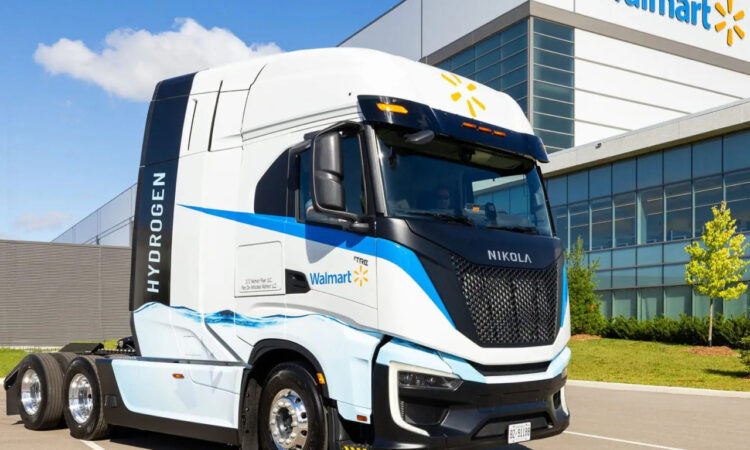Walmart Canada has become the first major retailer in Canada and in the entire North America to introduce Nikola’s hydrogen fuel cell electric semi-truck to its transport fleet, according to the hydrogen vehicle manufacturer.
The company further claims that the Nikola Hydrogen Fuel Cell EV Class 8 tractor, promising a range of about 800 kms with no need for refueling in between, avoids 97 metric tons of CO2 tailpipe emissions annually on an average.
“We’re proud to be introducing Walmart Canada’s first hydrogen fuel cell electric vehicle as a major milestone on our journey to becoming a regenerative company,” said Gonzalo Gebara, president and CEO, Walmart Canada.
“This is a first for a retailer in Canada and is an example of how we will continue to push forward, embrace new technology and spark change within the industry”, he added.
The deployment of hydrogen heavy-trucks opens new avenues for longer-haul travel with alternative power and zero-emission credentials, extending the emission-free range that’s currently possible with the fleet’s battery-electric options.
Steve Girsky, Nikola President and CEO, commented on the development, “At Nikola, we are incredibly proud to support Walmart’s sustainability initiatives and to be supporting their historic milestone of being the first retail fleet in Canada to operate a hydrogen fuel cell electric semi-truck,”.
“This collaboration with Walmart Canada, a brand committed to a more sustainable future, aligns perfectly with our mission to drive innovation and environmental responsibility in the transportation industry. This achievement underscores our shared vision for a zero emissions future and the positive impact we can make together for our communities and the planet overall”, he added.
The Nikola hydrogen fuel cell electric semi-truck are equipped with specialized tanks that hold gaseous hydrogen in high-pressure, similar to how a conventional truck carries diesel. The hydrogen then runs through the fuel cell stack, which is converted to electricity by combining it with oxygen, with water vapor as the only byproduct.
The resultant electric power is then transferred to the high-voltage power-net, which can charge the on-board batteries, and transfer power to the pavement via an e-axle with integrated electric motors.


